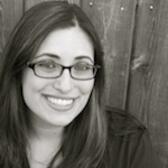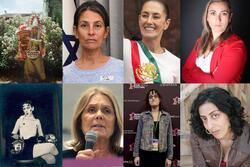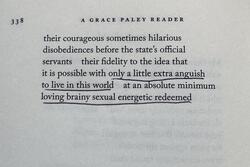The symbols we use to represent, and gender, Jewish women
Yesterday in Tablet magazine, Ruth Ellen Gruber* wrote about her trip to an old Jewish cemetery in Romania to look at the way images of shabbat candles are used on women's gravestones to convey meaning and memory. Gruber's project, (Candle)sticks on Stone, is time sensitive, as many of these gravestones are crumbling into obscurity, but, she writes, "those that remain comprise wonderful examples of vivid local stone-carving that fuse local folk art and Jewish iconography." Gruber is interested in presenting these carvings as works of art, but she does acknowledge the depth and complexity these carvings carry concerning the intersection of symbolism, Jewish tradition, and gender roles.
We are accustumed to the image of a woman, the iconic wife and mother, lighting shabbat candles. Indeed, she is commanded to in Jewish law. Has the image of candlesticks itself become gendered, and have candlesticks become a symbol representing Jewish women? This is an interesting idea, as many Jewish women (like Gruber herself) are not in the tradition of lighting Shabbat candles and do not consider the act a part of their Jewish identity.
This ties into a larger discussion going on at Yo Yenta and the Sisterhood about the woman's traditional role in Sukkot. Elana Szotkman writes, "As a woman, though, I find Sukkot to be one of the most difficult holidays we’ve got. It is laden with messages about gender differences and where women truly belong, and these messages seem to intensify each year." While men take on the responsibility of building the sukkah, and handling money to buy the lulav and etrog, women are relegated to the kitchen to cook and serve food. Yo Yenta's post, "Women Want Hammers" echoes this sentiment, though she admits she is not interested in taking on the additional responsibility of building the sukkah herself.
It is interesting to think of the gamut of Jewish symbols, especially the ones connected to holidays and their traditions (the candlesticks, seder plates, challah, menorahs, etc) as gendered objects rather than just religious ones. As gendered objects, do these symbols continue to reinforce traditional gender roles? It is also interesting to think about emerging symbols that challenge traditional gender roles, like the orange on the seder plate. Incorporating these new symbols is a start, but can old, traditionally gendered symbols be reconciled with a modern, feminist Jewish identity?
These questions are essentially rhetorical, but riddle me this: In this very moment am I, a Jewish woman, answering a question with a questions in the male tradition of Torah scholarship, or am I simply doing my womanly duty by serving up food for thought?
*As a random coincidence, Ruth Ellen Gruber's piece was posted on the same day a different Ruth Gruber, esteemed journalist, writer and humanitarian, celebrated her 98th birthday. Read about the elder Ruth Gruber's astounding life story in This Week in History.







i am not familiar with the orange.
But it did give me the idea that the Tu B'Sh'vat Seder can be seen as celebrating woman
Candlesticks representing women is a beautiful idea whose time should maybe not pass us all by. It would also be interesting to see if somehow the old gravestones could somehow be recreated or preserved a little bit longer. online casino
Leah You hit the nail on the head. These are exactly the questions that the Jewish community needs to be asking ourselves. So much of what we transmit it so very gendered -- is it possible, for example, for preschools to teach Shabbat without the "women do candles and men do kiddush" line? Isn't there a gender-neutral way to reach God? That's what I'm searching for. I"m glad you are, too. B'vracha, Elana
In reply to <p>Leah You hit the nail on by Elana
I think that what you published made a great deal of
sense. However, what about this? what if you added a little information? I ain't suggesting your content isn't solid., but suppose you added a headline to maybe get
a person's attention? I mean Add new comment | Jewish Women's Archive is
a little plain. You might glance at Yahoo's home page and note how they create news titles to grab viewers to open the links.
You might add a video or a related pic or two to get
people interested about what you've written. In my opinion,
it could bring your website a little livelier.